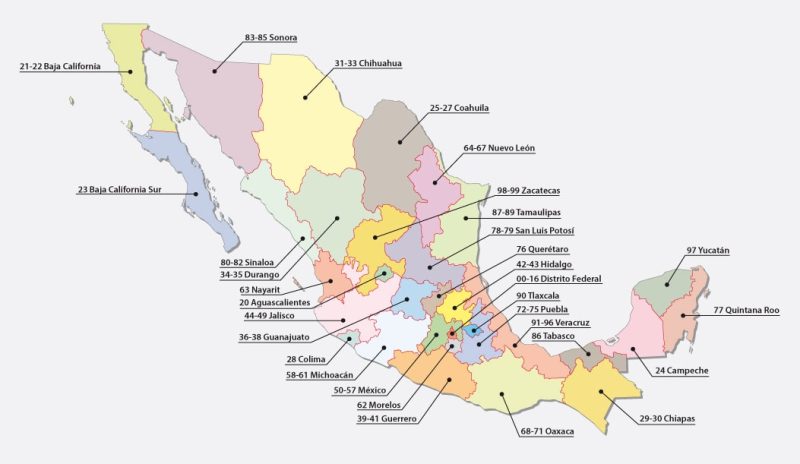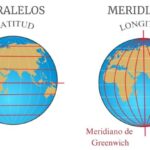We explain what the postal code is, what it is for and what its origin was. Also, some zip code examples.

What is zip code?
Postal codes are series of digits and letters used to designate a specific geographic region of a country and thus quickly identify the destination of postal shipments (that is, traditional mail), or to find addresses in global positioning systems (GPS). Each country has its own code system with which they identify their regions, cities and even parts of the same city.
Typically, ZIP codes correspond to specific locations, although some agencies that receive large amounts of mail, such as state agencies, large businesses, or media outlets, may have their own code. In any case, these codes are added to the writing of the destination postal address, and allow quick sorting of mail.
Some places lack a zip code, as their territories are not large enough to justify it. Such is the case, for example, of Gibraltar and Hong Kong.
Origin of postal codes
Modern postal codes emerged in Soviet Ukraine (part of the USSR) in 1932. This first system used the administrative segments into which large cities were divided, assigning each one a pair of identifying digits. It was published in a 268-page document, in the then Ukrainian capital of Kharkiv, under the name “List of postal establishments, train stations, cities, towns and rural councils of Ukraine with their designated postal codes.”
Although the Ukrainian pioneer system was abandoned in 1939, at the beginning of World War II, Throughout the 20th century, similar versions emerged in different nations of Europe and America such as Germany (1941), Argentina (1958), the United Kingdom (1959), the United States (1963) and Switzerland (1964), pioneers in postal organization in the world. Nations like Spain had to wait even longer, until the mid-1980s.
Mexico postal codes

The Mexican postal system was designed during the government of Porfirio Díaz. Currently handles five-digit zip codes the first two designate each administrative division of the national territory (or each mayor's office of Mexico City), as follows:
| State | Postal code (first two digits) |
| Mexico City | 01 to 16 |
| Aguascalientes | 20 |
| Baja California | 21 to 22 |
| Baja California Sur | 23 |
| Campeche | 24 |
| Coahuila | 25 to 27 |
| Colima | 28 |
| Chiapas | 29 to 30 |
| Chihuahua | 31 to 33 |
| Durango | 34 to 35 |
| Guanajuato | 36 to 38 |
| Warrior | 39 to 41 |
| Gentleman | 42 to 43 |
| Jalisco | 44 to 49 |
| Mexico | 50 to 57 |
| Michoacan | 58 to 61 |
| Morelos | 62 |
| Nayarit | 63 |
| Nuevo Leon | 64 to 67 |
| Oaxaca | 68 to 71 |
| Puebla | 72 to 75 |
| Queretaro | 76 |
| Quintana Roo | 77 |
| San Luis Potosi | 78 to 79 |
| Sinaloa | 80 to 82 |
| Sonora | 83 to 85 |
| Tabasco | 86 |
| Tamaulipas | 87 to 89 |
| Tlaxcala | 90 |
| Veracruz | 91 to 96 |
| Yucatan | 97 |
| Zacatecas | 98 to 99 |
Postal codes of Brazil
Brazil postal codes were created in 1971, with an initial structure of five digits which as a result of the sustained growth of the population turned out to be inefficient. So was restated to cover eight digits according to a 5-3 structure, that is, five digits in a row, a hyphen and then three more digits.
The first number of this postal code represents each of the ten postal zones into which the Brazilian territory was divided, starting in the city of São Paulo and marching towards the rest of the country in an anti-clockwise direction. This classification is given as follows:
| Brazilian postal region | Codes that start with |
| Greater São Paulo | 0 |
| Interior and coastal region of São Paulo | 1 |
| States of Rio de Janeiro and Espírito Santo | 2 |
| State of Minas Gerais | 3 |
| State of Bahia and Sergipe | 4 |
| States of Pernambuco, Alagoas, Paraíba and Rio Grande do Norte | 5 |
| States of Ceará, Piauí, Maranhão, Pará, Amapá, Amazonas, Roraima and Acre | 6 |
| Federal District and states of Goiás, Tocantins, Rondônia, Mato Grosso, and Mato Grosso do Sul | 7 |
| States of Paraná and Santa Catarina | 8 |
| State of Rio Grande do Sul | 9 |
Continue with: Sender
References
- “Postal code” on Wikipedia.
- “Mexican postal code” in Wikipedia.
- “Brazilian postal codes” on Wikipedia.





